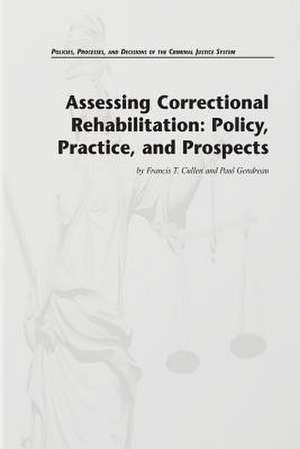Assessing Correctional Rehabilitation
Autor Francis T. Cullen, Paul Gendreauen Limba Engleză Paperback
Preț: 93.60 lei
Nou
Puncte Express: 140
Preț estimativ în valută:
17.91€ • 18.70$ • 14.82£
17.91€ • 18.70$ • 14.82£
Carte disponibilă
Livrare economică 15-29 martie
Preluare comenzi: 021 569.72.76
Specificații
ISBN-13: 9781478262503
ISBN-10: 1478262508
Pagini: 68
Dimensiuni: 152 x 229 x 4 mm
Greutate: 0.1 kg
Editura: CREATESPACE
ISBN-10: 1478262508
Pagini: 68
Dimensiuni: 152 x 229 x 4 mm
Greutate: 0.1 kg
Editura: CREATESPACE
